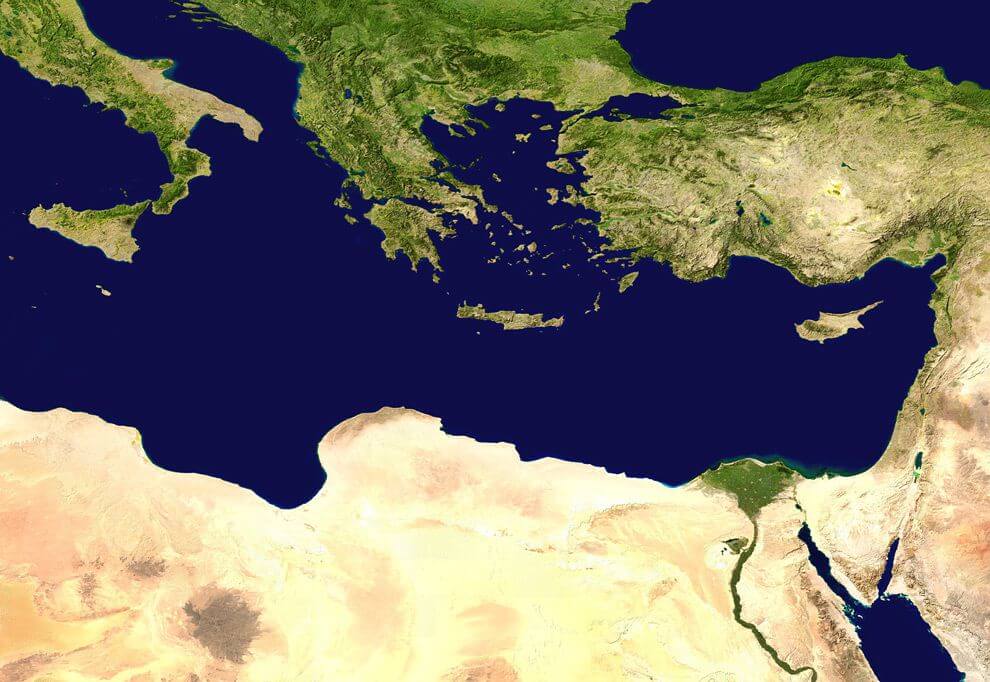When you hear the word “bridge,” what do you imagine?
Born and raised in the San Francisco Bay Area, I instantly think of physical infrastructure. The iconic Golden Gate Bridge connecting The City to Marin County in the north comes to mind.

© 2019 Jerald Reodica
Figuratively, a bridge is a link or connection between two irreconcilable things. Conceptually, a bridge can generally be thought of as a positive element – a necessary support that facilitates interconnection.
A “Bridge Fuel” as Moderation
Many politicians, energy “experts” & reporters insist that natural gas is a “bridge fuel.” They claim that this “transition fuel” is necessary while we cut our reliance on burning coal for electricity generation. Some even promise that natural gas production is just a stop gap measure to a decarbonized energy future. They may even pay lip service to an economy powered by renewable energy infrastructure consisting of solar photovoltaic (PV) panels and wind turbines. They’ll claim that this bridge is a “moderate” strategy to combat climate change. However, we must consider what lies ahead if we are to continue building this “bridge.”
Can we trust these claims that exploiting natural gas is a “moderate” strategy to curb climate change?
Of course not. This myth of moderation is more of the same from the fossil fuel industry. In short, it is a destructive distraction from building actual bridges to a sustainable life on planet earth.

© 2019 Jerald Reodica
Natural Gas = mostly Methane (CH4)
Methane (CH4 ) is the major component of natural gas. As more natural gas infrastructure is planned and built around the world, we must sound the alarm. Leakages from pipelines and venting from oil and gas wells represent yet another source of atmospheric CH4 – a greenhouse gas 86 times more potent than CO2 over a 20 year period.
The Intergovernmental Panel on Climate Change (IPCC) indicates in their Climate Change: the IPCC Scientific Assessment that methane is a major greenhouse gas contributor.

In fact, the industrial disaster often referred to as the Deepwater Horizon oil spill in the Gulf of Mexico leaked more than liquid oil from the Macondo well for 84 days. In the research journal Nature Geoscience, scientists outline their findings that 40 percent of the leaks consisted of another hydrocarbon, mostly methane.

Methane is a global warming accelerator. Burning natural gas is a bridge to a hellish life on earth.
Present & Future LNG Terminals
In the United States and Canada, federal and some state and provincial governments are bent on exporting domestically produced hydraulically fractured gas. As reported by the Global Energy Monitor in The New Gas Boom: Tracking Global LNG Infrastructure, capital expenditures for liquefied natural gas (LNG) export and import terminals in development amount to $1.3 trillion.
Along with this global gas expansion, regional markets are joining forces to lock in higher levels of natural gas production through mid-century.
For example, energy observers and the hydrocarbon profiteers have their eyes on the Eastern Mediterranean. Earlier this year, energy ministers from Cyprus, Egypt, Greece, Jordan and Israel, along with representatives from Italy and the Palestinian Authority, agreed to regional cooperation in offshore gas. They formed the Eastern Mediterranean Gas Forum (EMFG) to develop a regional natural gas market. This formation looks to profit from the large gas deposits that have been discovered in the Mediterranean over the last several years. While there is existing Egyptian LNG infrastructure, their aim is to eventually scale further in the 2020s if gas demand in Europe justifies the construction of pipeline infrastructure. As expected, US federal government officials have been touring the region with American companies like ExxonMobil seeking even more profits.

There is still hope. We have a limited amount of time to apply public pressure to stop these developments. Only 8% of LNG terminal capacity under development has entered construction. Now is the time to demand politicians & policymakers worldwide not buy into the polluters’ propaganda. All future natural gas infrastructure development must be outlawed.
Fossil Fuel Industry Propaganda
Some of this propaganda comes from the the GIIGNL, the international association of LNG importers. Member companies include Shell Energy, Eni, Total, Korea Gas, Mitsubishi and Tokyo Gas, among other climate change accelerators. Their 2019 Annual Report highlights an 8.3% growth in LNG trade in 2018 compared to the previous year.
One propagandist, in particular, is an Energy Contributor for Forbes and adamant cheerleader for the natural gas industry. Jude Clemente summarizes some of GIIGNL’s findings in his article titled the 9 Things to Know About the Booming Global Liquefied Natural Gas Market.
Clemente misrepresents the benefits of natural gas. He claims that “cleaner, flexible, affordable, and reliable natural gas is the go-to fuel to cut greenhouse gas emissions and backup intermittent wind and solar power”. In addition and without any evidence, he goes on to attack the “unrealistic Herculean forecasts for wind and solar power.”
Human Development?
In another article, Clemente goes on to claim that the “Western oil and gas industry can be the heroes to help” Africa keep more energy than it exports. He wrote that the “world has no higher goal than catalyzing Africa’s human development.”
However, has the “Shale Revolution” heroically improved human development in the country of its origin, the United States of America?

© 2019 Jerald Reodica
Can you imagine…
Certainly, a country with a 2019 annual military budget of $716 billion could potentially divert some of this funding to “human development.” Rather than funneling billions of dollars into a never ending immoral war in Afghanistan, imagine the wealthiest nation in world history supporting sustainable development. As opposed to death and destruction abroad, imagine US federal tax revenue supporting millions of jobs for teachers and clean energy builders. Picture fully funded universal health care. Envision improving the lives of millions of children through investments in early childhood development.
Consider a world where retrofitting millions of homes with solar electricity is not thought of as “radical.” Dream of a dynamic where the fossil fuel industry is not financially supported by governments.
In fact, the Global Subsidies Initiative (GSI) of the International Institute for Sustainable Development (IISD) already has dared to dream. IISD found that reallocating between 10 and 30 percent of the $372 billion countries spent on fossil fuel subsidies each year would pay for a global transition to clean energy.
In fact, the USA, in 2015 and 2016, gave the fossil fuel industry on average more than $20 billion each year in production subsidies. As reported by Oil Change International, these subsidies sustained and expanded the polluters’ operations. This money could have instead funded training workers for clean energy jobs, upgrading electrical infrastructure and research and development within the energy, transportation and construction sectors.
ALERT: Stop building stranded assets! New natural gas terminals & pipelines are wasteful & lock in more climate catastrophe.
As daydreamers and doers on every continent, we can’t trust climate deniers, climate destroyers and their enablers in government to catalyze human development. Instead, let’s look to visions provided by the United Nations Environment Programme. As opposed to what some pundits in the media would have us believe, a Global Green New Deal is not impractical or prohibitively expensive.

© 2019 Kathryn Savvides Reodica
Sustainable Electrification vs. Burning Fossils
Let’s consider the real benefits of going solar. In fact, the integration of decentralized, renewable energy generation in local communities instantaneously provides building electrification. Solar and wind electrification with energy storage can power rural health clinics, provide lighting for schools and facilitate access to knowledge and global connections through the Internet. We can’t forget that renewable energy generation avoids the air, land & water pollution that inherently comes with drilling, processing, transporting and burning fossil fuels like natural gas.
Yes, it is true that oil and gas production is only one of a number of potential methane sources. For instance, other sources include industrialized agricultural, landfills and wetlands. Surely, more sustainable methods of growing, distributing, consuming and composting food can slow methane emissions.
Also, we must not underestimate the Arctic’s ticking ‘carbon bomb’ as permafrost melts at an accelerating rate. For example, due to the extreme weather events this summer, 2.3 million acres of Alaska and 7 million acres of Siberia have burned throughout July. This same article mentions the heatwave that spread from Europe to the Greenland causing close to 200 billion tons of ice melt last month.
The production of more natural gas terminals will only accelerate these devastating feedback loops. As the amount of carbon in our atmosphere increases, so too does the likelihood of more heatwaves. With more heatwaves come more melting permafrost, which releases even more methane into our atmosphere. A warmer planet results in more melting ice. As sea levels rise, the mass flooding of coastal towns, villages & metropolitan cities around the world will become a lived reality.
The Careless Children in Charge
Adults, as opposed to children, generally consider the consequences of our actions. We would expect the same from our public officials. Politicians and policy makers must take the long view. They must abandon their short term thinking revolving around tax revenue from future exploitation of natural gas reservoirs. People in power must acknowledge that burning fossil fuels only leads to more extreme weather events and rising sea levels. Additionally, the resulting permanent changes to our world due to climate change will affect the poorest people disproportionately. It is critical our global economy transitions to carbon-free energy infrastructure now.
As the United Nations IPCC warned us last October (2018), we only have 12 years to keep global warming to a maximum of 1.5 degrees Celsius. Last year, James Anderson, a Harvard professor of atmospheric chemistry, detailed a more dire warning. Instead of 12 years, he stated that we only have 5 years to mitigate the worst of climate change. He may be right. More recently, the UN confirmed that July 2019 was the hottest month in recorded history.

© 2019 Jerald Reodica
As everyday people, we all have a role to play to ensure a just transition to a livable planet.
You and I can prevent more drought, floods, extreme heat, poverty and increased suffering for hundreds of millions of our fellow human beings. Through collective organizing and public pressure, we can challenge the fossil fuel industry’s goal to extract and burn as much as possible. The continuation of this goal only increases their profits and maintains the inertia of a mine and burn economy. Our planet will burn ever hotter!

© 2019 Jerald Reodica
Yes, building a more sustainable future is a Herculean task. Yet, it isn’t Sisyphean.
Solar Energy is Our Past, Present & Future
Solar energy delivered to earth is about 4,000 times larger than our current energy needs. In fact, all renewable energy originates in sunlight. In the future, almost all of the world’s energy needs could be met using electricity. When more electricity is generated through renewable sources, we improve our chances to avoid even more devastating consequences of the mine and burn economy.
This summer, feel the sun on your face and the wind in your hair. If you’re by the beach, take in the simple pleasure of waves breaking over your feet. Solutions to our growing anxiety over climate chaos and social disintegration are in sight. A just transition to an economy fueled by the sun improves public health. A just economy that accounts for planetary limitations alleviates individual and household financial insecurity and supports a thriving commonwealth. After all, a social safety net can only exist on a habitable planet.






Leave a Reply
Your email is safe with us.